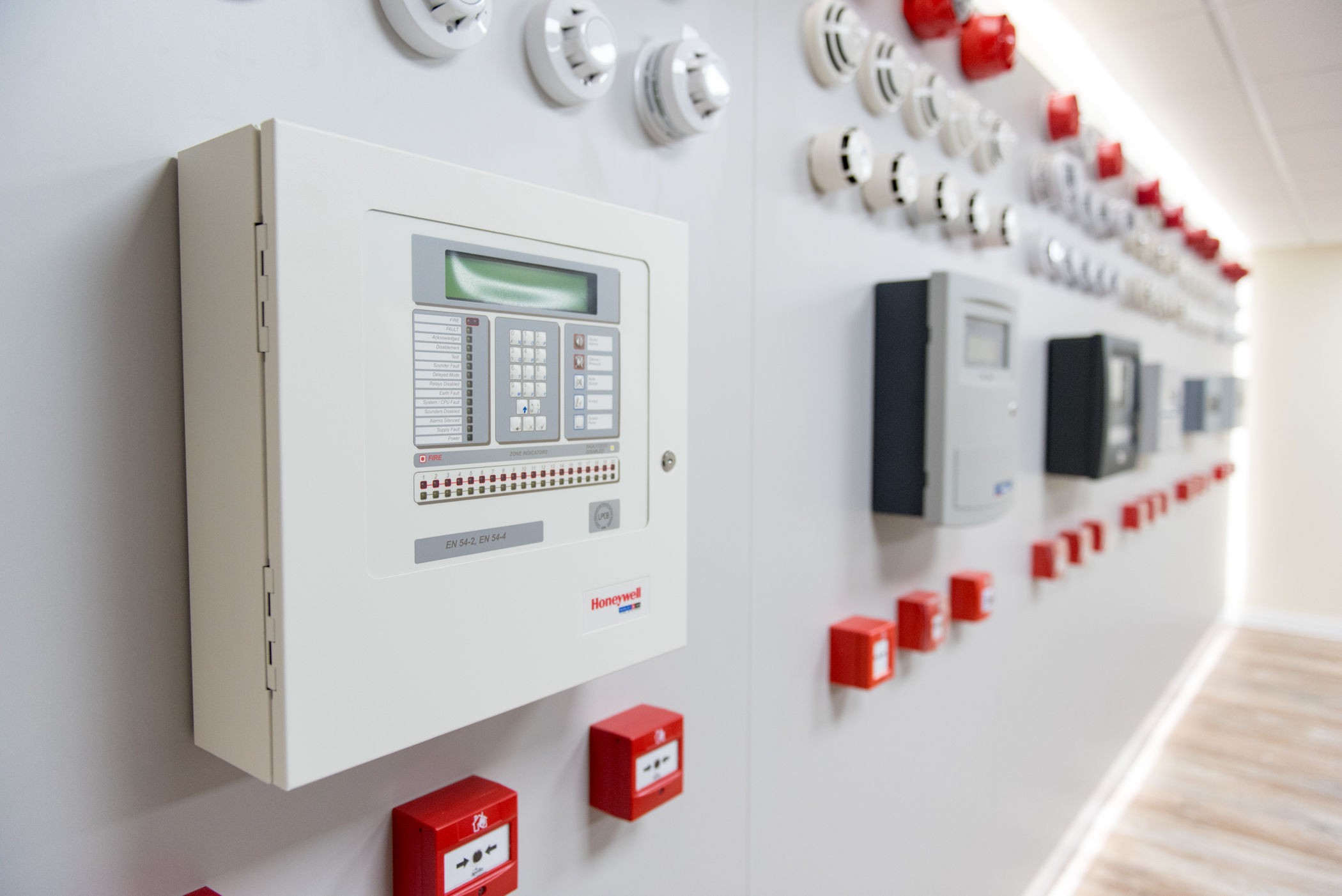What is a Fire Alarm System?

Fire Alarm System
Fire alarm systems are safety mechanisms designed to detect fires through fire detectors and alert people using notification devices. These systems play a critical role in ensuring early intervention and minimizing damage in fire-prone areas.
What is a Fire Alarm System?
Throughout history, fire has posed a significant threat to humans. With the increase in urbanization and construction, the risk of fire has also risen. Modern fire alarm systems have evolved with technological advancements to detect fires at an early stage and provide effective protection.
Fire alarm systems consist of detectors that send signals to control panels, notification devices, and alert mechanisms that warn individuals in a building. They identify fires during the three critical stages of progression: the initial stage, the intervention stage, and the uncontrolled spread stage, enabling prompt action.
Types of Fire Alarm Systems
Fire alarm systems are categorized into three main types based on their technology and connectivity:
1. Conventional Fire Alarm Systems
Conventional systems divide the area into zones. Fire alarms indicate the zone where the fire has occurred but do not provide precise location details. These systems are commonly used in small to medium-sized buildings.
2. Addressable Fire Alarm Systems
Addressable systems identify the exact location of the fire. Each detector is assigned a unique address, allowing pinpoint reporting of fire location, faults, or maintenance needs. These systems are ideal for large and complex facilities.
3. Wireless Fire Alarm Systems
Wireless systems connect devices to the control panel without wiring, using radio signals to transmit alarms. Like addressable systems, wireless systems also provide precise fire location details, making them suitable for areas where wiring is challenging.
Components of Fire Detection Systems
Fire alarm systems are composed of three main components:
- Fire Control Panels: Process signals from detectors and activate alarm devices.
- Fire Detectors: Detect fire indicators and send alerts to control panels.
- Fire Notification Devices: Warn people using audible or visual signals.
Standards for Fire Alarm Systems
The design and installation of fire alarm systems vary based on the requirements of the specific area. The choice of systems is determined by the type of control panels (conventional or addressable) and the nature of fire risks in the environment.
Fire alarm systems must comply with national and international standards to ensure quality and reliability. Certificates such as EN54, LPCB, VdS, UL, and AFNOR validate the performance of these systems.
Fire Detection Devices and Their Types
Fire detectors are designed to respond to various fire indicators and are selected based on the specific fire risks in the environment. Key types of fire detectors include:
- Smoke Detectors: Detect smoke particles.
- Heat Detectors: Measure temperature increases.
- Flame Detectors: Sense light emitted by flames.
- Gas Detectors: Identify the presence of hazardous gases.
- Pressure Detectors: Monitor pressure changes.
- Beam Detectors: Measure smoke density in large areas.
Fire Alarm Control Panels
Control panels serve as the system's brain, processing signals from detectors and activating alarms. These panels are classified into:
- Conventional Systems: Provide zone-based fire detection.
- Addressable Systems: Offer precise location identification.
- Aspirating Smoke Detection Systems: Use advanced sampling methods for sensitive environments.
Wireless panels are also increasingly popular due to their ease of installation.
Fire Notification Devices
Fire notification devices warn individuals when a fire is detected. They come in two forms:
- Audible Devices: Emit sound alarms.
- Visual Devices: Use light signals for environments with noise or hearing-impaired individuals.
Ensuring Quality and Maintenance in Fire Alarm Systems
To ensure the longevity and efficiency of fire alarm systems:
- Products must meet high-quality standards.
- Installation and workmanship must be flawless.
- Regular maintenance and inspections are essential.
Legal regulations mandate periodic inspections and maintenance to ensure the system's reliability. Professionally designed and installed systems are key to effective fire prevention and response.
